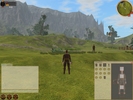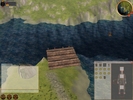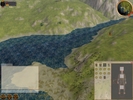 I meant to publish this post almost a month ago, but never got around to it. Better late than never though...
I meant to publish this post almost a month ago, but never got around to it. Better late than never though...I finally did the release of Ember 0.5.5 some days into December.
Among the usual slew of bug fixes and overall improvements one of the major new features is the compass. I've written about that before on this blog, and I'm really pleased with how it turned out. It's currently very basic, but I have all kinds of plans for it in the future. Hopefully it will right now help people getting oriented in the world.
This video shows the compass in action.
Another big change was the upgrade to Ogre 1.6. While it might not result in any immediate improvements to the client, it has a much improved script parsing engine and resource management. The latter is extremely useful for us since we now finally can do away with the complex concept of having separate "user" and "system" media. This separation was forces because of earlier versions of Ogre's inability to correctly handle duplicate materials. Instead of letting the client handle the clashes Ogre threw an exception and totally corrupted the internal resource state. Not so any more though. The advantages of this will better be shown in the next release.
We've also added a lot of fixes and improvements to the entity creator. It's still not completely functional though since it's missing proper model preview functionality, something which will be fixes with the next release of Eris (which the next release of Ember will depend on).
Alexey and Thomas also worked on improving the OSX support, to a point where Ember now correctly builds and runs on OSX. Unfortunately it turned out to be a little harder to create a contained package with all dependent libraries. I'm confident that it will be sorted though.

